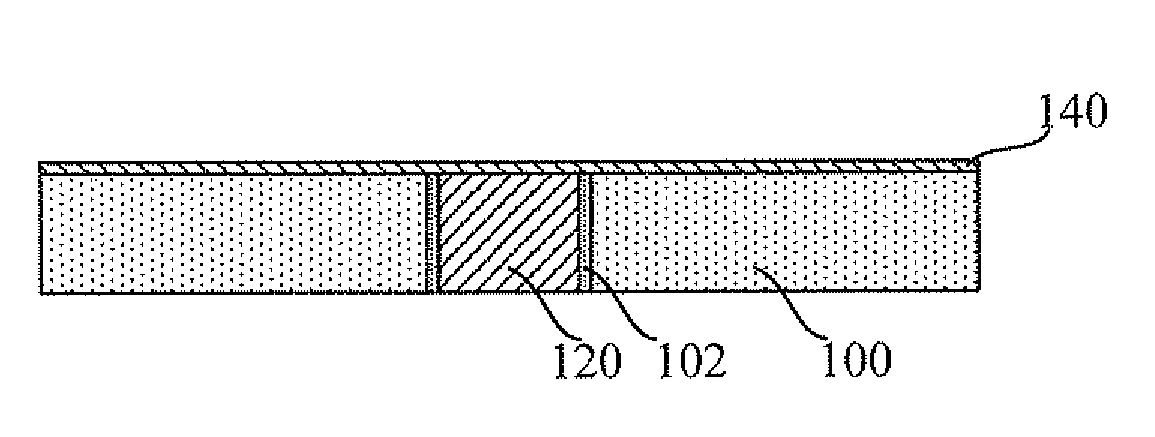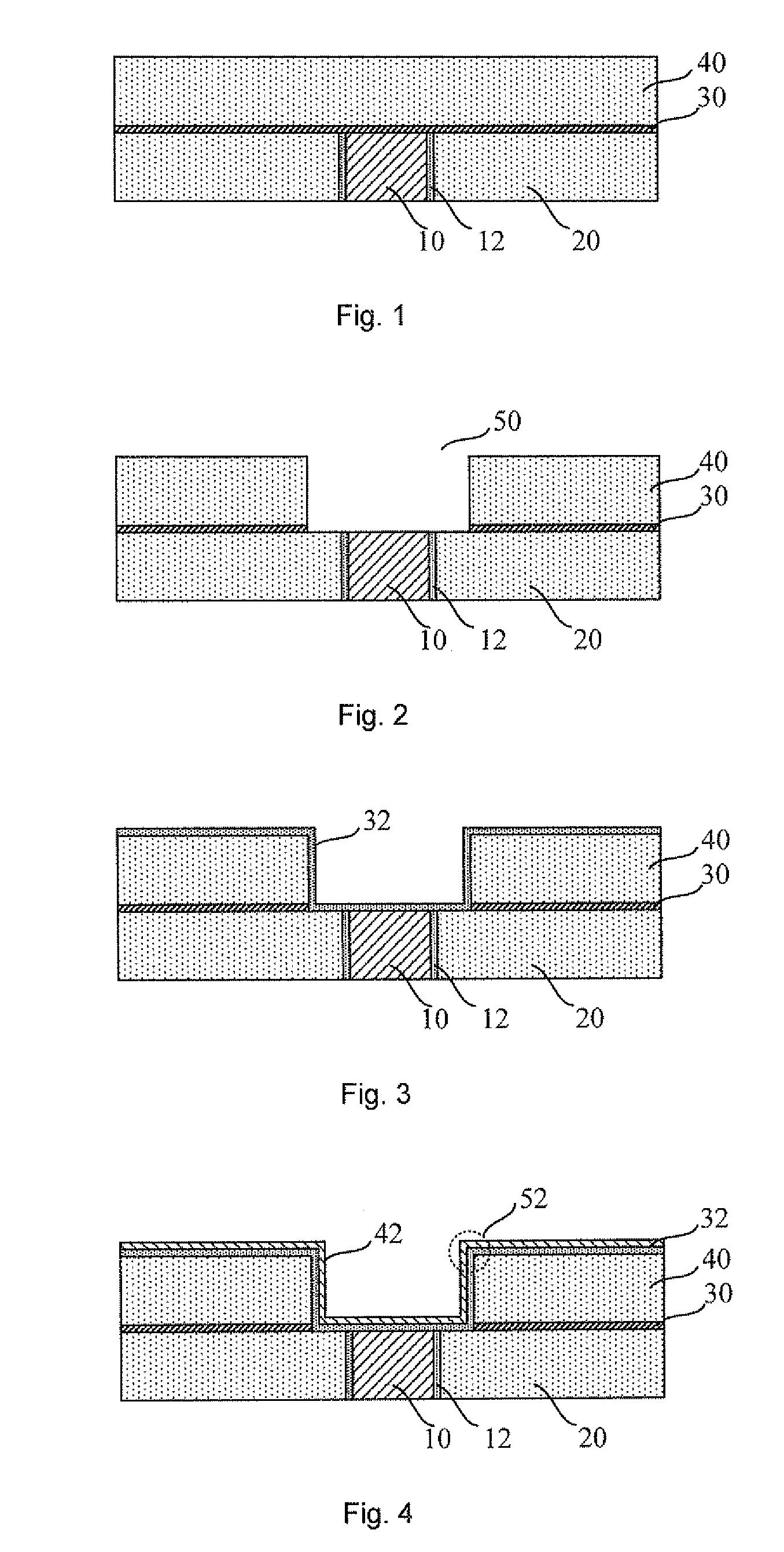Metal Interconnection Structure and Method For Forming Metal Interlayer Via and Metal Interconnection Line
a metal interconnection and metal layer technology, applied in the field of metal interconnection structure and methods for forming metal interlayer vias and metal interconnection lines, can solve the problems of more and more difficult to fill contact holes, failure of devices, and more and more difficult to fill the second barrier layer b>32/b> and the first copper layer, so as to reduce the difficulty in filling the second metal layer
- Summary
- Abstract
- Description
- Claims
- Application Information
AI Technical Summary
Benefits of technology
Problems solved by technology
Method used
Image
Examples
Embodiment Construction
[0024]The disclosure hereinafter provides various embodiments or examples to explain the concept of the present invention. Though specific exemplary parts and arrangements are described in the following, they are just examples and not intended to limit the present invention.
[0025]Further, in this disclosure same reference numerals and / or symbols may be repeated through different embodiments. Such repeating is for the purpose of simplification and clarity, and does not indicate relationships between the various embodiments and / or arrangements discussed here.
[0026]In this disclosure, examples for various specific processes and / or materials are provided. However, substitution of other processes and / or other materials which are apparent for those skilled in the art does not depart from the scope of the present invention. It is to be noted that boundaries of various regions described in this disclosure include necessary extensions required by the processes.
[0027]According to the present ...
PUM
 Login to View More
Login to View More Abstract
Description
Claims
Application Information
 Login to View More
Login to View More - R&D
- Intellectual Property
- Life Sciences
- Materials
- Tech Scout
- Unparalleled Data Quality
- Higher Quality Content
- 60% Fewer Hallucinations
Browse by: Latest US Patents, China's latest patents, Technical Efficacy Thesaurus, Application Domain, Technology Topic, Popular Technical Reports.
© 2025 PatSnap. All rights reserved.Legal|Privacy policy|Modern Slavery Act Transparency Statement|Sitemap|About US| Contact US: help@patsnap.com



